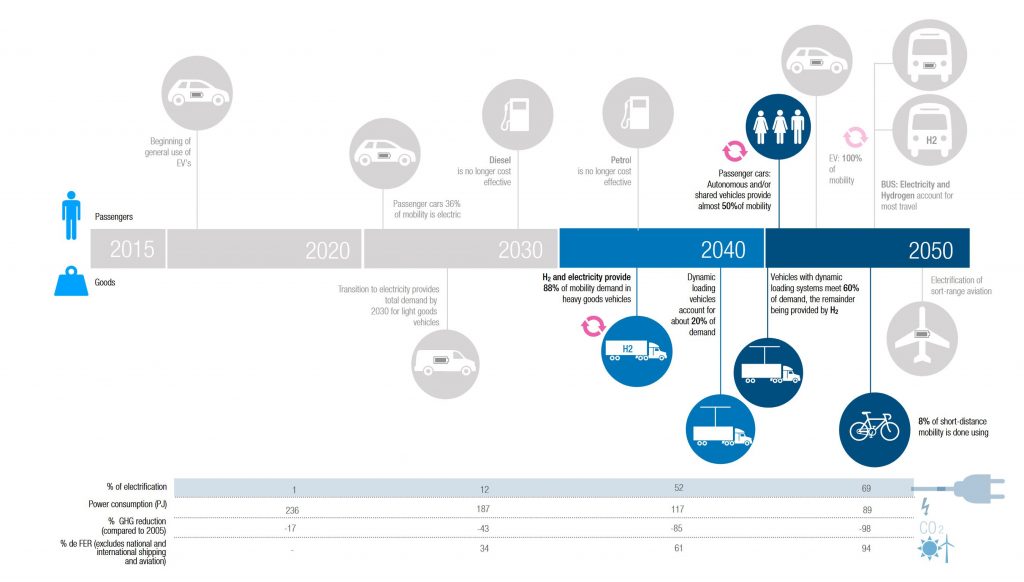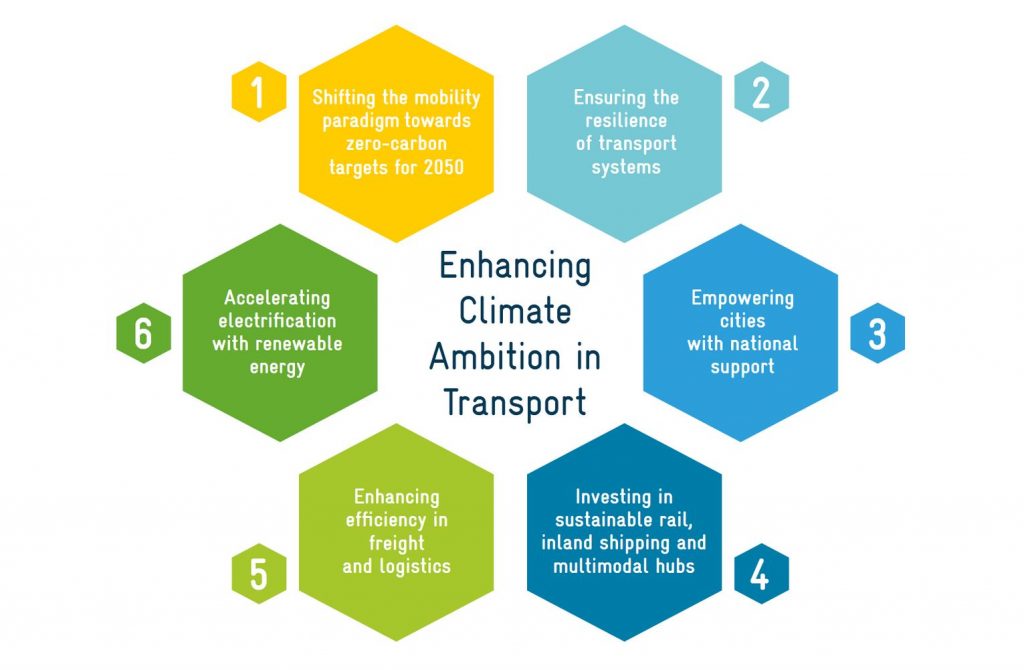The following page outlines key insights and recommendations derived from the Tracker of Climate Strategies for Transport. These insights result from the assessment of the second generation of Nationally Determined Contributions (NDCs) and Long-term Low Greenhouse Gas Emission Development Strategies (LTS). These findings are supported by good practices, which are highlighted in the green boxes. At the end of the document you can find information about the GIZ and SLOCAT campaigns to enhance transport ambition in NDCs.
| For information on the background of the Tracker of Climate Strategies for Transport, please refer to this page. We encourage you to use the database for your own work and research. Find relevant instructions in this how-to use guide. The summary analysis of the second generation NDCs can be retrieved here. |
Lesson #1: Low-income countries need more support in the implementation of NDCs and LTS.
While nearly every low-income country has submitted a second-generation NDC, still very few low-income countries have submitted a LTS, as of July 2023. The large majority of submitted LTS originate from European high-income countries. NDCs and LTS are an important opportunity for countries to express their need for international support, so engagement in this process is especially important for low-income countries. The transport actions featured in the NDC by low-income countries need to be supported by international climate finance.
| Transport Actions in Rwanda’s Updated NDC |
| Rwanda’s updated NDC includes a comprehensive set of transport measures on public transport infrastructure (including bus rapid transit systems), walking and cycling infrastructure, electric vehicles, and vehicle emission standards. The activities are linked to the Sustainable Development Goals. The focus is on mitigation measures; however, the document does include references to adaptation benefits. Access Rwanda’s Updated NDC here. |
Lesson #2: Overall adaptation content in NDCs has increased, but generally there are still many shortcomings on transport adaptation and infrastructure resilience.
In the first generation of NDCs, the topic of adaptation was often overlooked. The second generation of NDCs shows that countries have more knowledge and tools available to consider adaptation to climate change. However, the adaptation of transport infrastructure is not being reflected to the same extent as transport mitigation in terms of absolute quantity but also depth. Regarding depth, the issue is that the content of transport adaptation is superficial and often lacks to specify specific modes and detailed actions.
| Adaptation in Moldova’s Updated NDC |
| Moldova’s updated NDC puts a strong focus on adaptation. Over a dozen transport-related adaptation measures have been identified in the assessment. These activities cover resilient urban infrastructure, capacity building, funding schemes, resilience codes and standards, and more. View all measures in detail in Moldova’s Updated NDC here. |
Lesson #3: The second-generation NDCs feature twice as many references to mitigation as the first generation of NDCs.
They are only outpaced by the very lengthy and detailed LTS. These include a very rich diversity of transport measures which in some cases (e.g. Austria’s LTS) are structured according to the Avoid-Shift-Improve framework. Portugal has developed narratives on decarbonisation including a narrative on transport decarbonisation up to 2050 in its LTS (see the graph).

Lesson #4: Not enough attention is being put on aviation and shipping in NDCs and LTS.
These two sectors can be strengthened by:
| Fiji’s NDC includes the target to reduce domestic maritime emission 40% compared to BAU levels by 2030. Cabo Verde’s updated NDC, the Updated NDC by the US and Singapore’s LTS highlight the need to work closely with the International Maritime Organization and International Civil Aviation Organization in order to address international transport emissions. |
The broader global development community is also taking a closer look at new NDCs and LTS. Besides our transport-focused assessment of climate plans, there are numerous ongoing analyses on various aspects of NDCs, including
Building on existing transport-related roadmaps, calls for action, discussion papers and research findings, GIZ devised six essential recommendations for policymakers and other officials dealing with climate action and ambition in the transport sector. As policymakers draft their NDC revisions and updates, they can heed these recommendations, which have been broadly formulated to allow adaptation to divergent national contexts.
In addition to enabling emission reductions, the recommendations address various sustainable development challenges in the transport sector. Beyond fighting climate change, taking action in all six areas will help to reduce air pollution, noise and congestion, while also enhancing access to transport, road safety and the efficiency of the freight sector, contributing to six of the seventeen SDGs.

For an overview of the findings of the Six Action Recommendations please see the graphic illustrations in English, French and Spanish as well as postcards. Read more about GIZ’s Action Recommendations here.
The level of ambition for sustainable, low carbon transport must be drastically increased in NDCs. That is why SLOCAT, in collaboration with GIZ, the World Resources Institute (WRI), and the Institute for Transportation and Development Policy (ITDP), with contributions from: Alstom, the Climate Group, the Institute for Sustainable Development and International Relations (IDDRI), the International Association of Public Transport (UITP), the International Union of Railways (UIC), and Walk 21, have developed ten key recommendations for raising transport ambition in countries’ Nationally Determined Contributions.
The transport sector’s global emissions are heading in the wrong direction, accounting for the fastest-growing source of emissions around the world. We must change this trend now. The Intergovernmental Panel on Climate Change underlines that a pathway for transport which contributes to maintaining global temperature rise below 1.5ºC is possible. However, the transformation of our mobility and transport systems for an equitable 1.5ºC Planet must be prioritised in policy, regulatory and fiscal frameworks.
The aim of these practical NDCs recommendations is to inspire and support policymakers at all levels of government and other key stakeholders as they update and raise climate ambition in NDCs and LTS. The recommendations provide actionable and concise pathways to reduce the growing negative environmental, social, and economic impacts of transport business as usual. Each recommendation is supported by case studies and resources.

Find more details about the recommendations here in English and Spanish as well as a summary poster and case studies.
You are currently viewing a placeholder content from X. To access the actual content, click the button below. Please note that doing so will share data with third-party providers.
More Information